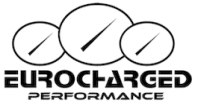Results 1 to 8 of 8
-
04-19-2012, 02:40 PM #1
Awesome article on the BMW M Evolution Part:1
Part 1: The Origins of the M Division
Before the M division was established, BMW had a reputation for successful racing saloon cars and as an F2 engine manufacturer.
The origins of BMW's M cars are buried somewhere in the 1960s and '70s when BMW was just climbing the first few rungs of the automotive ladder.At the 1961 Frankfurt Motor Show, the German automaker revealed a new platform on which a compact sedan and coupe were to be assembled. It was still a year away from its commercial launch, but the crowd was hard to control. During that time, however, BMW was far from the powerhouse it is today.

At least two decades were to pass before it would take on the might of Daimler-Benz, and another decade would pass before it was recognized as a manufacturer of luxury cars.No one dared in 1961 to envisage its climb to the top of the world's premium car manufacturers. The M brand, which had an important role to play in that Cinderella story, had still yet to be conceived. In the automotive world as well as in car marketing, there is one certain way of gaining your competitors' respect and your potential customers' attention and admiration: using the motorsport platform to prove your products' competence.
During the '70s as BMW became more and more successful, it became clear to its dominant manager, Eberhardt Von Kunheim, that in order to promote his cars and give them a unique character and flavor, a radical course of action was needed. And since competing head-to-head against Daimler-Benz in the premium segment was out of the question at the time, the motorsport route remained the only viable alternative for fast glories.
The motorsport course was partially taken during the '60s when BMW took part in competitions on the national and international levels with its BMW 1500 model, the first product of the New Class series.

The New Class possessed excellent potential as a racing machine and that was proven in 1964, the car's first year of competition, when Hubert Hahne established easy domination over his rivals. He recorded 14 victories in 16 races on the way to being crowned the German circuit racing champion.In 1966 with the 2000TI, propelled by an enlarged engine, Hahne won the European Touring Cars Championship title in Division 3. Two years later Austrian Dieter Quester repeated this success with the 2002. The New Class was also a competent competitor in rallying, winning 8 out of 10 rounds in the 1968 German rally championship.
The engine block of the 1500 endured a long career and its peak was reached almost at the end of its life. During the Formula 1 turbo era (1977-1989), BMW developed on that engine block a turbo charged racing engine used by the Brabham team.In qualifying configuration it was the strongest ever F1 engine with over 1500hp, however it was dogged by poor reliability.That didn't prevent Nelson Piquet from winning his second out of three F1 world titles in 1983 driving a Brabham-BMW. Its fuel legal status was a source for malicious rumors ever since.

The racing success of the New Class led to the foundation in 1972 of BMW MotorsportGmbH, known also as either M-Technik or just as "M" (for Motorsport) that facilitated BMW's racing program. It then became more complex with the introduction of the BMW Formula 2 engine.Those 1600 cc engines propelled single-seat cars of various marques in the European Formula 2 championship when that category was at its zenith, second only to Formula 1. F1 drivers at the time were even still competing in Formula 2. For a few years BMW-engined single seaters dominated the F2 series, winning multiple races and a few championships.
In later years when BMW Motorsport GmbH became more involved with road cars than racing, the "Motorsport" was replaced by "M" only. Also at that time the famous M logo was decided upon. It was designed with the M and to its left three slightly angled stripes. The one on the right was red, representing the team's biggest sponsor at the time, Texaco. On the left was BMW's traditional blue and in the center was purple, a combination of the two. When Texaco ended the partnership, BMW bought out the rights to the logo, a transaction they would never come to regret.









-
04-19-2012, 02:41 PM #2
BMW M Evolution, Part 2:
The M1 Placed Munich at the Supercar Level
The M1 was almost an accidental car in the history of BMW, and with its mid-engine and wedge shape it
stands out from the crowd.
What is the common denominator between the M1, the only BMW ever to have a midship engine layout that
was conceived to be a racing car, and the Chevrolet Volt, a car that was designed from the get-go to
enhance frugal motoring in an era of growing emissions standards?After all, those are two very
different cars from two very different eras. The answer is one Robert A. Lutz, aka "Maximum Bob",
automaker executive and genuine car guy.

During the 1970s, while Lutz served as BMW Vice President of Sales, he found it necessary to initiate a
project to build a sports car that would represent BMW in international racing.In 1976 he initiated the
E26 program that led to the creation of the M1. He assigned the car to take part in Group 4 racing, a
category that was intended for sports cars with production of at least 400 units in a 24 month period.
Years later when Lutz became General Motors "cars czar" and following a long time resistance to the EV
concept, he changed his mind and steadfastly promoted the development of the much more complicated and
expensive solution, the range extender.
In the first case the project didn't achieve the anticipated success while the jury is still out on the
latest project. Naturally the E26 project was loaded on BMW Motorsport GmbH that had only so far
prepared racing cars based on production cars and that is a vast difference from building a legal road
car from scratch that also aims directly at the world's race tracks.To overcome that insurmountable
obstacle, BMW outsourced the styling to Giorgio Giugiaro, the famous Italian designer. Clearly the M1
doesn't look like a traditional BMW and its configuration is a one-off in BMW's history.

To add insult to injury, BMW contracted out the car's production to Lamborghini, although that
relationship didn't materialize any further when the Italian automaker went bankrupt and BMW people had
to go and salvage the panel molds from Lamborghini's facility.The car was modeled around the gull-wing
turbocharged concept car created in 1972 by BMW designer Paul Bracq (whose previous employer was
Daimler-Benz for whom he designed the second generation SL-Class). Continuing from this design study
with its rounder lines, Giorgio Giugiaro created the sharp profile of the M1 with its distinct, almost
jagged edges and corners.
Bracq and Giugiaro had already cooperated in the past in creating the 6-Series coupe. BMW engineers
actually considered two engines for the new car: a V10 and an inline-six, choosing the latter because
it conformed better to BMW's traditional engineering values and experiences.
And with this experience they produced a 3.5-liter engine with 277hp based on a production block with
4-valves per cylinder that was borrowed from the racing engine heads.That midship engine propelled the
fastest German sports car at the time to a top speed of 164.47 mph.

The all-electronic digital ignition system also reflected the latest in state of the art technology and
the dry sump lubrication bore clear testimony to the sporting genes of the M1. Two fuel tanks from both
of the engine's sides supplied fuel and a ZF five-speed gearbox connected to the engine via a two-plate
dry clutch.
Although the M1 was conceived to mark the success of BMW Motorsport, the sporting division was not
involved in producing the car, apart from its engine. Since Lamborghini couldn't perform the job, it
was divided between Marchesi, who built the frame, T.I.R who produced the glass-fiber-reinforced
plastic body shell and ItalDesign, where the cars were built.
They were then sent to Baur in Germany where all mechanical systems and components were assembled. The
unexpected delay forced BMW to come up with a solution to keep the public's interest in the car alive.
So a new idea emerged to create a racing series for the car that would be a sidekick to the European
round of the Formula 1 championship races.That arrangement lasted for two seasons, in which the M1
Procar Series took place with the participation of a few F1 drivers. Niki Lauda was crowned champion in
1979 and Nelson Piquet took the crown in 1980.

The M88 engine was also tuned up to 490hp, it weighed just 2,250 lbs. and with long gear ratios top
speed was set at 193 mph. Marc Surer, the former Swiss F1 driver, lapped the Nordschleife of the
Nurburgring in just 7 minutes 55.9 seconds.
The M1 was sold for 100,000 Deutsche Marks (more than $500,000 today), quite expensive for a BMW.
However, the demand was much higher than the supply and all cars were sold before production ceased.
When the time arrived for the M1 to take part in Group 4 racing, after it reached the 400 units
production milestone, it was already too late.
The FIA changed the regulations of the Group 4 category so the car was retired, though its unique and
idiosyncratic heritage in BMW history is assured.






-
04-19-2012, 02:42 PM #3
BMW M Evolution, Part 3: The First M3 - And With a Four Cylinder Engine
The first M3 enjoyed an idiosyncratic design and a lot of success in motorsport activity.
"Mr. Rosche", Eberhard von Kuenheim, the BMW Chairman, said to Paul Rosche, engineering manager of M GmbH, "we need a sporty engine for the 3 Series." With that, von Kuenheim set the tone for generations of M automobiles to come."Whether you believe it or not - we had created an outstanding four-cylinder engine for the 3 Series within the space of two weeks," said Rosche. "Under the development name S14, this engine generated headlines in sport and volume production over the years to come.
One Sunday, I drove to von Kuenheim's flat and gave him the car for a test drive. When he came back he said: 'Good, I like it.' And that's how the M3 came into being."The main attribute of the M series in all its guises is what lies at the front of the car, i.e. its engine. Power plants were always the pride and joy of the Bavarian marque as exterior design and other non-functional essentials were less of a priority. Of course a powerful engine cannot live up to customers' expectations without improved chassis components, but in BMW's case they were always secondary in importance to the engine.

Therefore it is no wonder that the technician who was chosen and was most competent to lead the development team was Paul Rosche, a mechanical engineer with sound knowledge and experience of engine design.In addition to his duties at M GmbH, Rosche also headed the F1 turbo engine project which had powered Nelson Piquet to the 1983 F1 World Championship driving a Brabham-BMW.That was a unique engine in the F1 field, based on an inline four-cylinder block, as opposed to the V-configuration of most other competitive F1 engines.
The reason was probably frugality; BMW had an off the shelf block which could be adapted to Formula 1 (and in qualifying setup could produce up to 1500hp).To go back from F1 to a powerful sportive engine in a road car posed different challenges to the designers. And having an F1 engine block in your car was also something special.The first M3 appeared in model year 1986, based on the E30 platform and with two variants, a two-door coupe and a convertible. It was equipped with a 2.3-liter engine, which was assembled of components from various BMW engines.

The four-cylinder block was taken from the M10 engine which was developed for the New Class series. It was over bored and reinforced to the M88 inline-6 engine block specifications. Head architecture and valve train were copied from the M1 engine. Later, the M6 inline-6-cylinder was adopted for aggressive breathing. Engine output was at 200hp and a top speed of 146 mph.Testing on the Nurburgring was hard on materials, particularly on the exhaust system. The cause was unplanned growth in the exhaust system because of high temperatures at full load as the system expanded up to 25 mm and became distorted within its mounting.
A simple set of different washers solved the problem and the car was successfully tested at high speed at the Nardo test track. The M3 body was different to the regular E30 due to 12 new panels that were supposed to improve aerodynamic efficiency. The bodywork was made of metal and only front and rear bumpers, side sills, trunk and spoilers were made of lightweight plastic, so the E30 M3 weighed in at 2,568 lbs. and remained a sporty lightweight with only 12.8 lbs. for every 1 horsepower. The E30 M3 was in production for six years in which it campaigned extensively as a works team in international racing and international rallying.

It was homologated for Group A Touring Car racing and also found a true adversary in the Mercedes-Benz 190E 2.3-16V that was introduced in 1983. In its final years of competitions, known as Evolution III (or Sport Evolution), the 2.5-liter S14 engine in full race trim was capable of over 250hp.The M3 road-going version produced 195hp. Evolution models continued with the 2.3-liter engine though with a few improvements such as a revised intake camshaft profile and modified exhaust camshaft timing, increased compression, and a more efficient cylinder head intake port design that increased output to 220hp.
Larger wheels, thinner rear and side window glass, a lighter trunk, a deeper front spoiler and an additional rear spoiler, were found on the evolutions models.As expected, these original M3s have increased in value over the years and are highly sought after by collectors.









-
04-19-2012, 03:19 PM #4
Where did you find this?
BRAND NEW IN BOX 991.2 standard/non-pse SPW cat bypass pipe for sale - $899 shipped
New generic 991.2 PSE bypass pipes - $499 shipped
-
04-19-2012, 03:53 PM #5
Carbuzz app on the App Store

-
04-19-2012, 04:22 PM #6
I need a $#@!ing app...
BRAND NEW IN BOX 991.2 standard/non-pse SPW cat bypass pipe for sale - $899 shipped
New generic 991.2 PSE bypass pipes - $499 shipped
-
04-19-2012, 04:48 PM #7
Were you gonna post this? lmao
-
04-19-2012, 04:52 PM #8










 Quote
Quote













f30n55, we...
f30n55 is now here!